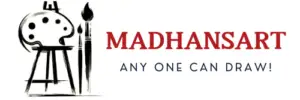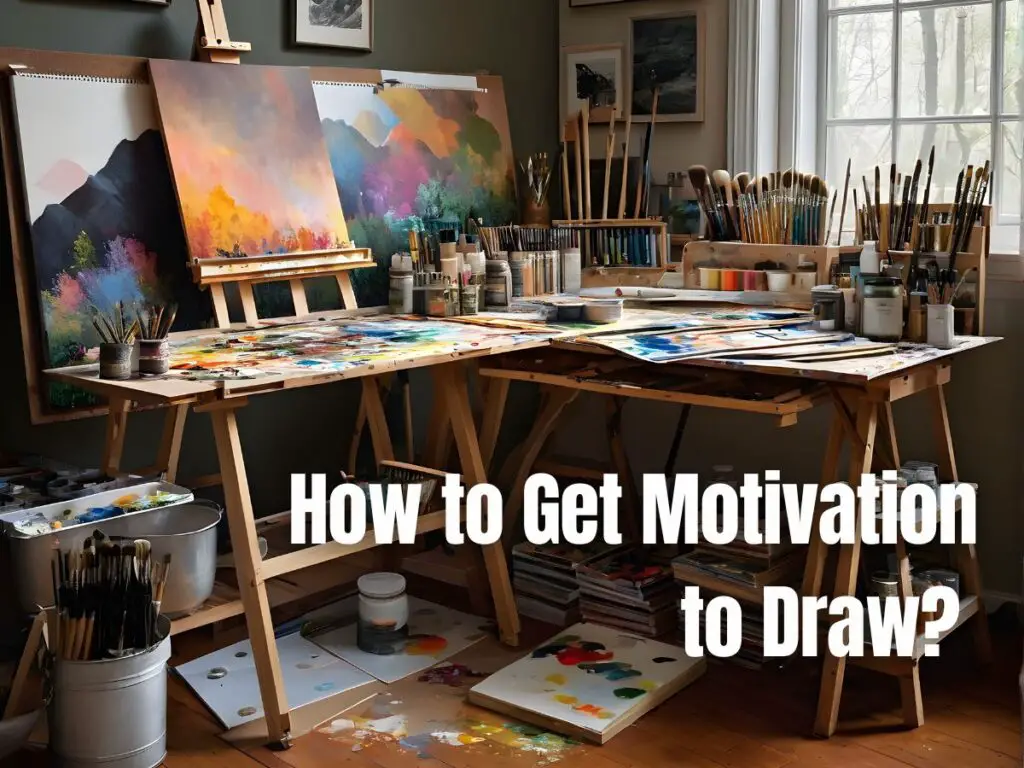Have you ever been in creative headspace, ready and excited to draw something beautiful, but slowly lost your motivation as soon as you started? Whether you are a budding artist or a seasoned professional, it can be challenging to stay motivated enough to put out polished pieces of art. An artist’s most significant challenge can be finding and maintaining the drive necessary to create exceptional artwork.
We will explore tips on finding and staying motivated and bringing your artistic vision to life. But before that, let’s first answer the fundamental question.
Table of Contents
What is Motivation?
Motivation is a psychological concept involving factors that direct and energize human and animal behavior. It encompasses the reasons for people’s actions, desires, and needs. Motivation can be defined as a driving force that initiates and guides goal-oriented behaviors. It causes us to act by getting a glass of water to reduce thirst or reading a book to gain knowledge.
How to Get Motivation to Draw?
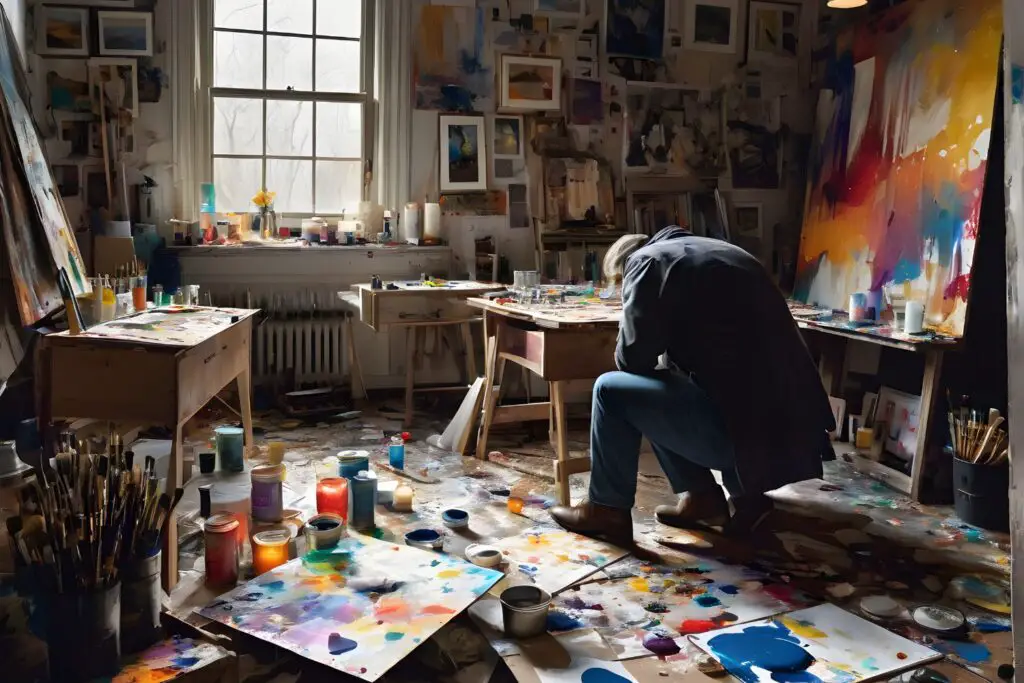
To get motivated to draw, try setting a goal or challenge for yourself, separating your workspace from distractions, seeking inspiration from other artists, and giving yourself time to relax and recharge. You can also try a new medium or art project to keep things interesting and share your work with others to get feedback and support. Remember, motivation is a personal journey, so don’t be afraid to experiment and find what and how it works best for you.
There are several ways to get motivated and inspired in art. Here are some interesting tips to help you find and maintain your motivation.
Establish a Routine to Start Drawing
Establishing a routine to start drawing is about creating a consistent space and time for art. This routine could be setting aside a specific time each day or week when you dedicate yourself solely to drawing.
The beauty of a routine is that it transforms drawing from a sporadic activity into a habitual one. This consistency is key in developing and honing your skills. Moreover, a routine can help overcome the initial resistance or procrastination that often impedes creative work. It’s like muscle memory; the more you do it, the easier it becomes to start.
This routine doesn’t have to be rigid or lengthy. Even 15 minutes a day can make a significant difference over time. The critical aspect is the regularity, not the duration.
Embrace Goal-Setting and Progress Tracking
As an artist, to keep yourself motivated and on track in your artistic journey, set a goal or challenge for yourself and track your progress. Start by writing down the plan, ideas, and inspirations you want to accomplish, such as learning a new technique or creating a specific piece of art.
Create a landscape, break your task into studying, or watch YouTube videos. Then, create your rough idea and try putting what is in your mind on paper. Now, it is half the work done. Sometimes, seeing something concrete on paper will drive you to the next step of painting, etc.
Finally, document your progress along the way. You could take photos of your work or track how long it takes to complete each part of the project. It will help you to continue pushing yourself and stay on track with your drawing goals.
Commit to Daily Drawing Sessions, Find Time Every Day
Consistency is key when it comes to staying motivated with your drawing. Try forcing yourself to draw for a set amount of time each day, even if it’s only 10 minutes, and stick to it. This continuity will help build better habits and make it easier to focus on improving your skills.
Try setting mini-goals throughout the session so you feel confident and comfortable. These mini-goals could be anything from starting a new sketch or shading part of an existing one.
Finally, remind yourself why you started drawing in the first place and how much progress you can make with consistent practice.
Check: How do you sketch daily to create a routine?
Experiment with Different Art Supplies and Find Inspiration
Experimenting with different art supplies is like opening a door to a world of new possibilities. Each medium, be it pencils, pastels, watercolors, or acrylics has its unique properties and potential.
The physical act of trying different tools can stimulate different parts of your brain, leading to new ways of thinking and creating. It’s not just about the outcome but about understanding how different textures, hues, and techniques can alter your artistic expression.
This experimentation can be particularly liberating for those feeling stuck in a creative rut. The key is not to fear mistakes or imperfections; instead, view each piece as a step towards discovering your unique style and preferences. So, delve into the unknown territories of art supplies and see where they take your imagination.
Challenge Your Artistic Skills with New Mediums and Projects

If you’re looking for ways to motivate yourself to draw, trying a new medium or art project is a great way to challenge yourself. Whether you switch up the tools you use or try something completely different, experimenting with various materials can help keep your creativity alive.
Try pencils, charcoal, pastels, pens, paint, and digital art programs. Or take on an ambitious project such as creating a book of sketches or developing an illustration series.
No matter how you choose to challenge yourself artistically, it’s important to remember that drawing is a skill that requires practice.
Get Out of your Comfort Zone and Draw Something New
A great way to stay motivated and push yourself with your drawing is by getting out of your comfort zone and creating something new or unexpected.
You may be good at Landscape. Try portrait for a change. Think about what art-related areas you want to improve and try challenging yourself by learning a new skill or tackling an issue you have yet to succeed in.
When it comes to experimenting, don’t be afraid to let go of perfectionism and focus on having fun, which could mean creating something abstract or simply starting with a blank canvas and seeing where the inspiration takes you. Whether it’s exploring different mediums, techniques, or concepts, pushing yourself out of your routine comfort zone can lead to some truly extraordinary creations.
Actively Seek Out Inspiration
Actively finding inspiration is a proactive approach to keeping your creative juices flowing. Inspiration is all around us, but it often requires a conscious effort to notice and harness it.
This could mean going on nature walks, visiting galleries, reading books, or exploring different cultures and their art forms. The internet is also a treasure trove of inspiration, with access to countless artworks, tutorials, and communities.
Another effective method is to keep an inspiration journal or a digital folder where you collect images, quotes, and anything else that sparks your creativity. This resource becomes a wellspring of ideas when you feel stuck or uninspired.
The key is to regularly feed your mind with diverse and stimulating material. Remember, inspiration is not just about what you see; it’s also about your interpretations and emotional responses to the world around you.
Draw Inspiration from a Wealth of Artists and Diverse Sources
If you are looking for ways to motivate yourself to draw, seeking inspiration from other artists or sources is a great way to do so. Look through your favorite artists’ sketchbooks and browse your fellow artists’ artwork. It can be incredibly motivating to see what others have created.
You could also look at professional artists’ work in person and online and check out the artwork in museums, galleries, books, and magazines. There’s something that I love about seeing how others create. With millions of amazing artists creating beautiful art, you may find new ideas you never thought of before.
Incorporate Melody, Listen to Music During Your Art Sessions
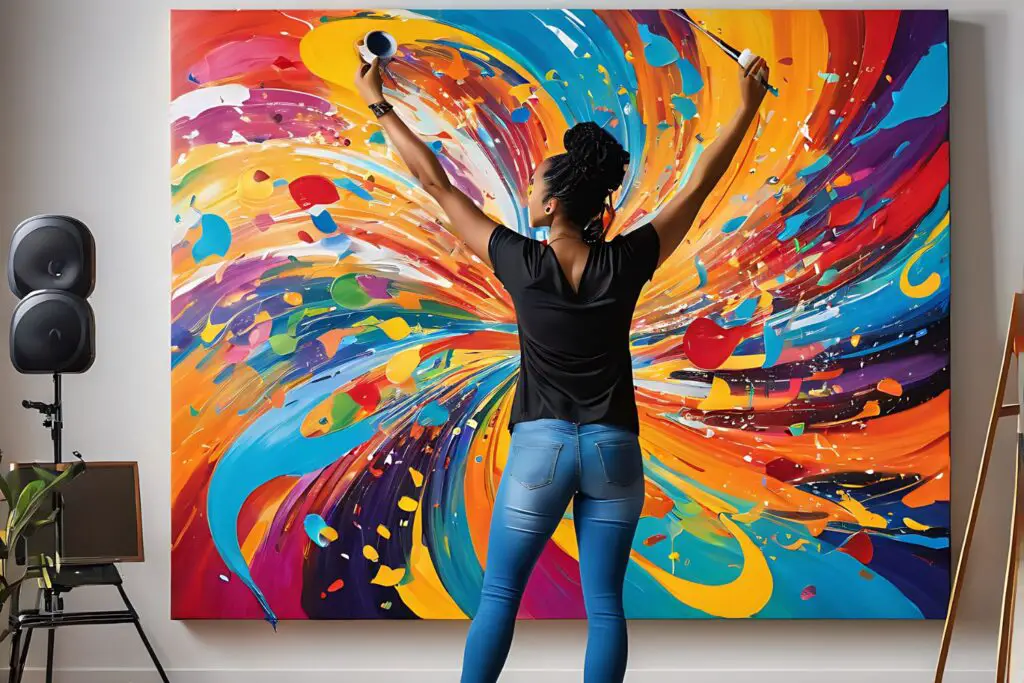
Incorporating music into your art sessions can significantly enhance the creative experience.
Music has the power to influence mood and energy levels, both of which are crucial in the artistic process. For instance, a lively, upbeat tune can invigorate your work, adding dynamism and spontaneity to your strokes.
In contrast, a soft, melancholic melody might lead you towards more introspective and detailed work. The key is to experiment with different genres and see how they affect your creative process. Music can also be a tool for overcoming creative blocks.
It can transport you to different worlds, evoke memories, and stir emotions, all of which can be potent sources of inspiration.
Create New Art Regularly
The practice of creating new art regularly is crucial for maintaining and enhancing artistic skills. You have to draw every day.
This habit also fosters a disciplined approach to art. It’s not about creating a masterpiece every time but about the process of creation itself.
Regular practice helps you understand the nuances of your chosen medium, how different elements interact on your canvas, and what themes or subjects resonate with you. Moreover, this consistent practice can be incredibly fulfilling. Over time, you’ll be able to look back and see a tangible progression in your work, which can be a significant motivator.
Remember, the goal is progress, not perfection. Each piece, no matter how small or imperfect, is a step forward in your artistic journey.
Make a Distraction-Free Workspace to Focus on Your Art
Creating a workspace separate from distractions can be a great way to stay motivated with your drawing. Find a space in your home or studio where you can focus and feel comfortable, free from any noise or visual disturbances.
Once the workspace is set, take some time to make it inviting by crafting an atmosphere that encourages creativity. You could add calming elements like plants, dim lighting, soothing music, and favorite art materials. It may also help to add inspirational items like images of your famous works of art or objects that remind you why you love to draw.
Taking steps to create an inviting atmosphere can help keep you focused and inspired, motivating you to keep practicing.
Enjoy the Freedom of Pressure-Free Scribbling and Doodling
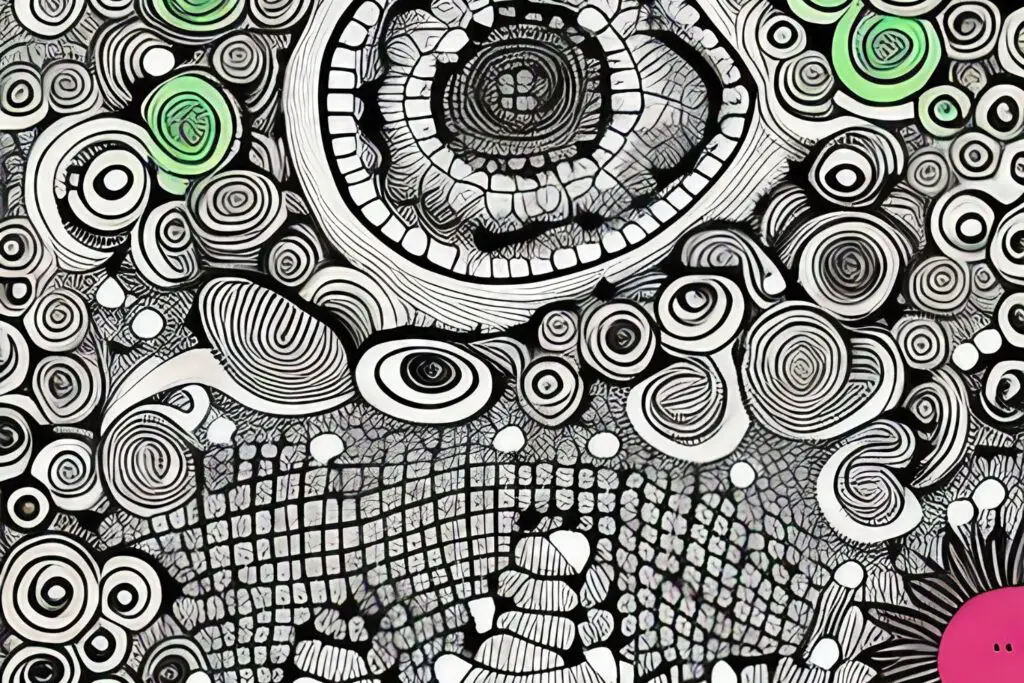
Scribbling and doodling without pressure or expectation is a great way to be motivated when drawing. Not only does it keep your mind relaxed, but it also helps your skills improve more efficiently.
You can explore different techniques, styles, and shapes without worrying about the outcome when you’re not given any parameters or expectations. It’s a stress-free environment for yourself and your artwork that encourages creative growth rather than stifles it. Plus, you must always discover what kind of hidden talent you may find.
Engage with the Art Community for Feedback and Growth
Sharing your artwork with others is a great way to inspire yourself and keep your creative juices flowing. Connecting with other artists, whether it’s via social media or in person, can be incredibly motivating.
Look through your favorite artist’s sketchbooks and browse your fellow artists’ artwork. You may find new inspirations that you never thought of before. Having an accountability partner is also an excellent way to motivate, set deadlines for yourself, and report on your progress so someone else can hold you accountable.
Millions of amazing artists create beautiful art, so why not join them? Take some time to scribble down exciting ideas and challenge yourself to create something unique you might surprise yourself with.
Pair Up with an Art Buddy
Pairing up with an art buddy can be a transformative experience for any artist. An art buddy is more than just a companion; they are a source of inspiration, motivation, and constructive criticism.
When you work alongside an art buddy, you’re exposed to their techniques, perspectives, and creative process, which can profoundly influence your own work. Moreover, regular interaction with an art buddy can keep you accountable. It’s easy to put off drawing when you’re on your own, but knowing someone else is counting on you can be a powerful motivator.
Feedback is another crucial aspect of having an art buddy. Constructive criticism from someone who understands your work can be invaluable. Likewise, offering feedback to your buddy can refine your analytical skills, helping you understand art on a deeper level.
Remember, an art buddy relationship is reciprocal. It’s about growing together, sharing successes and setbacks, and most importantly, fostering a shared passion for art.
Join a Group or Community of Artists to Connect and Share your Art
Joining a group or community of artists is one of the best ways to keep drawing and getting inspired. Seeing other people’s artwork, talking with fellow artists, and sharing your art gives you an extra boost of creativity and helps to keep your ideas fresh.
Look for groups online or in person that feature artwork from different types of artists, from those just starting to professional ones whose work inspires you. Try new techniques and tools, listen to music as you draw, and post your sketches on social media, whatever it takes to get you excited about creating with millions of amazing artists creating beautiful works.
Embrace the Journey of Making Art
Seeking out diverse sources of inspiration is crucial for any artist wanting to expand their creative horizons. By stepping beyond your usual sources of inspiration, you open the door to new ideas, techniques, and perspectives that can invigorate your art.
Diverse inspiration can come from many places: different cultures, historical periods, nature, urban landscapes, literature, music, and even other art forms like dance or cinema. Each source offers a unique aesthetic, storytelling method, and emotional expression.
Similarly, nature can inspire organic forms and textures, while urban landscapes can lead to more geometric and structured works.
Remember, inspiration is everywhere. It’s about keeping your eyes, mind, and heart open. Regularly exploring new sources of inspiration can ensure that your art remains dynamic, evolving, and reflective of a broad spectrum of human experience.
Prioritize Regular Breaks to Rejuvenate Your Creative Energy
Taking breaks and giving yourself time to relax and recharge is critical to breaking the monotony in the drawing process. Make it a habit to take short breaks between sessions or set a timer regularly. When you feel too stressed, stop drawing.
It can help you prevent burnout and lack of motivation. Sometimes, we need time off from our routine to return feeling refreshed and ready to create again. If you lose motivation, taking a few moments for yourself can make all the difference.
Do something that makes you feel good, like watching your favorite movie, listening to music, or going out with friends. Doing things that you like will help get you back on track.
How to Stay Motivated to Draw?
Staying motivated to draw can sometimes be a challenge, but there are effective strategies to keep your enthusiasm alive. First, remember why you like drawing. Reflecting on this can reignite your passion when you feel low motivation. Carry a sketchbook with you, as it’s a great way to find motivation to draw anytime, anywhere. If you lose your motivation, try to draw what you love or experiment with new drawing techniques that excite you. This approach can help you get into the mood for drawing.
When you find yourself not inspired to draw, look to your favorite artists or enroll in an art school class for fresh, creative ideas. Setting art goals and developing a drawing habit are also among the top 7 tips to stay motivated. If you’re struggling to sit down and draw, consider establishing a routine where each new day is an opportunity to draw requires dedication.
Sometimes, you might get distracted and think you don’t need to draw anymore, but remember, motivation for drawing often comes after you begin. So, just start – even if it’s figure drawing or a simple sketch. Enjoy drawing as a process, and you’ll often end up drawing something wonderful. Remember, the best way to find drawing motivation is to keep exploring and stay curious.
Why is it Important to Get Motivated to Draw?
Motivation keeps an artist focused and driven, leading to a higher quality of work and improved artistic performance over time. Additionally, motivation can help you push past creative blocks or mental obstacles that may arise, allowing you to create your best work.
One another reason is financial. Motivation is essential for an artist to stay creative in the long run and make money from their art. Motivated artists will continuously strive to improve their skills, create beautiful art pieces, and market them effectively.
Now that we know why motivation is necessary let’s explore why an artist might lose motivation.
What are Some Reasons you Lose the Motivation to Draw?
There are reasons why someone might need more motivation to draw. Some possible causes include the following:
- Creative Burnout: Continuous drawing without adequate breaks can lead to burnout. This exhaustion saps the energy and enthusiasm needed to create.
- Perfectionism: Setting unrealistically high standards or being overly critical of your work can lead to frustration and a loss of motivation.
- Lack of Inspiration: Sometimes, artists struggle to find new ideas or get inspired, which can halt their motivation to draw.
- Comparison with Others: Constantly comparing your work to that of other artists, especially in the age of social media, can be disheartening and demotivating.
- Routine Monotony: Repetitively drawing the same subjects or styles without variation can become tedious and uninspiring.
- Personal Issues: External factors like stress, anxiety, or life changes can impact your mental state and, consequently, your motivation to draw.
- Unmet Expectations: If your work doesn’t meet your expectations or isn’t received well by others, it can lead to disappointment and decreased motivation.
- Lack of Goals: Not having clear objectives or goals for your art can lead to a lack of direction and purpose in your drawing practice.
- Technical Challenges: Encountering difficulties with certain drawing techniques or media can be discouraging.
- Environmental Factors: An uninspiring or uncomfortable work environment can also affect your motivation to draw.
Some need help finding the motivation to start with. It’s important to remember that losing motivation is a normal part of the creative process, and it’s okay to take a break or try something different if you’re stuck.
How to Overcome Art Block?
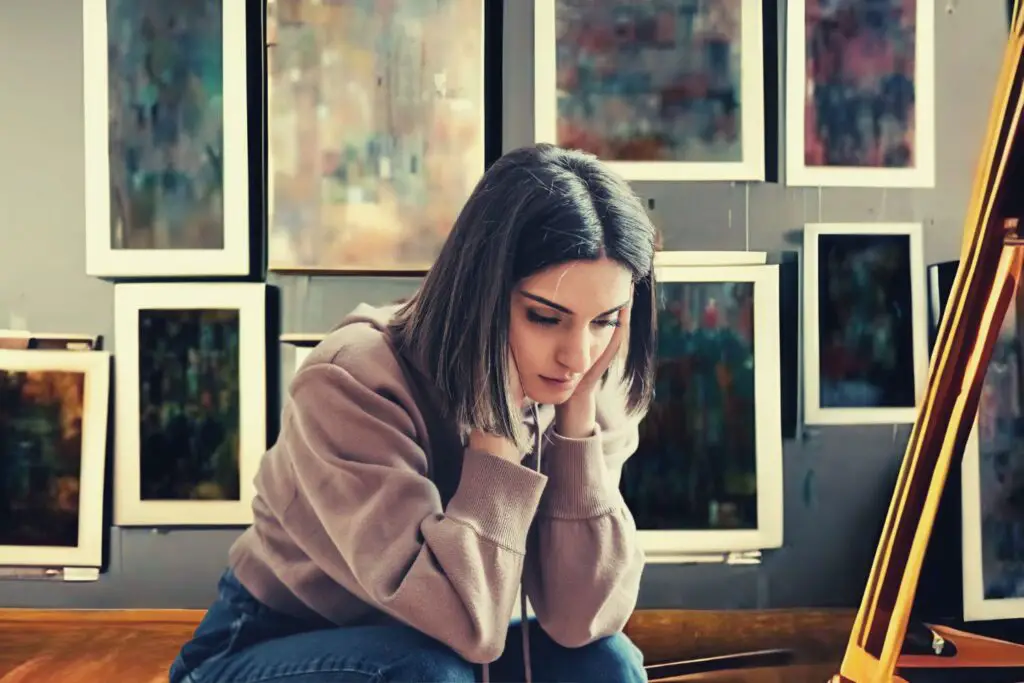
The first step is acknowledging that you have a problem. If you’re finding it hard to draw consistently or progress on your projects, you’re likely experiencing some form of art block.
Art block can manifest in several ways, such as struggling to develop ideas, feeling uninspired, or being unable to focus.
However, there are ways to overcome art block and get back into a creative flow. Here are eight tips to help you get started:
- Acknowledge that you have a problem.
- Identify the symptoms of art block.
- Be patient, and don’t force yourself to create if you’re not in the mood.
- Take a break if you need one, but try not to let yourself get too distracted.
- Experiment with different mediums and techniques.
- Draw inspiration from other artists, both professionals and amateurs.
- Set simple, achievable goals for your daily drawing practice.
- Find a way to reward yourself for completing your practice sessions.
These tips can overcome art block and get back into a creative flow.
Remember to be patient and to take things one step at a time.
Now that we have removed the art block let’s probe into how to get the motivation to draw.
What Should I Do When I Want to Draw but Need Help Figuring out Where to Start?
We have already covered this above, but again, we are reiterating. When you want to draw but don’t know where to start, take some time to gather the supplies you need, such as paper, pencils, markers, and colored pencils. Find inspiration from other artists whose work you admire and what they share online.
Practicing different techniques will help strengthen your drawing skills and ideas. Take small steps and focus on the basics to develop an excellent foundation for any artwork or project.
You can also check professional artists’ websites, art blogs, and tutorials for tips and motivation. Finally, remember that improving takes time, practice, and patience.
Why do I Lose Motivation Quickly When I try to Draw?
Again, we have also covered this question in bits and pieces above but reiterating. Finding ways to keep your motivation up is critical. Set realistic goals that don’t overwhelm you, and take breaks between sessions so you don’t burn out.
If you feel stuck on the same projects, try something different – learn to draw something new or explore another art medium instead of drawing with pencils all the time. Building a new habit and setting aside dedicated drawing time can motivate and inspire you. Start creating more exciting new ideas and challenges for yourself to stay inspired. Remember that it takes patience, practice, and perseverance to improve!
How to Get Motivation to Draw: Fuel Your Artistic Passion
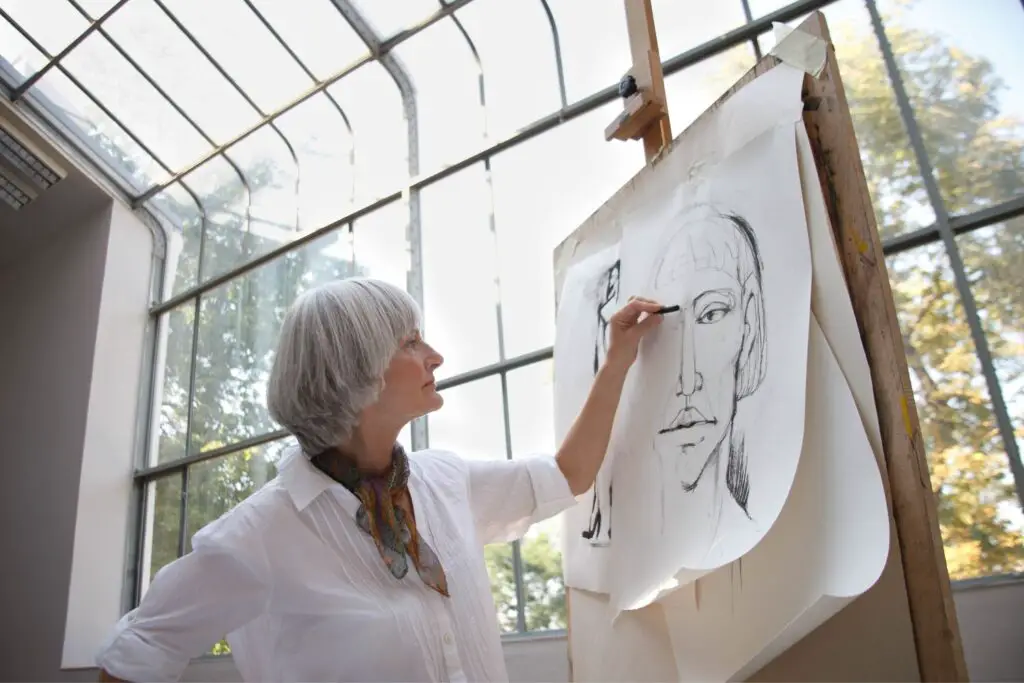
Be encouraged if you still need to gain the talent or skills to draw. Everyone starts somewhere! Start by setting small goals and learning the basics of drawing, such as shapes, lines, textures, and perspectives. Learning to draw takes patience, practice, and perseverance; take your time and enjoy the process!
Watching professional artists’ artwork and getting inspired by them can be a great way to learn. There are also millions of other artists out there who share their work online so you can explore different art styles. Don’t wait for inspiration – get serious about creating art and find the motivation to keep going.
What Techniques Help in Finding Drawing Inspiration?
Finding drawing inspiration often requires exploring diverse techniques. One effective method is to keep a sketchbook for spontaneous ideas and doodles. Exploring different art styles and studying works of your favorite artists can also spark creativity. Nature walks, people-watching, or visiting new places provide fresh perspectives.
Additionally, participating in art challenges or workshops can introduce novel concepts. Experimenting with various mediums and subjects, and reflecting on personal experiences or emotions, can also be a rich source of inspiration.
How do I Deal with Perfectionism in Drawing?
Dealing with perfectionism in drawing involves shifting your mindset. Focus on the process rather than the outcome. Allow yourself to make mistakes, as they are essential for learning and growth. Set realistic goals and celebrate small achievements.
Practice self-compassion and remind yourself that no artist creates a masterpiece every time. Embrace imperfections in your work as unique aspects of your artistic style. Remember, art is a journey of continuous improvement, not a quest for flawlessness.
Conclusion
Motivation is an essential element of the creative process. It keeps artists on track and inspires them to produce their best work. It empowers them with the drive to overcome any artistic roadblocks or mental barriers they may face, leading to better results over time. With its help, artists can continue to be motivated while crafting meaningful works that move others.
The key to sustaining motivation is establishing achievable goals, carving out a distraction-free workspace, and drawing inspiration from fellow creators. Exploring new mediums can keep things exciting while offering much-needed feedback and support. Remember to take time off every once in a while, too! Recharging your batteries can give you the energy boost required for a practical, creative experience.
Motivation is a solo journey that every individual must traverse differently, so it’s vital to discover what strategy works best for you.
Frequently Asked Questions
-
How can I get Motivated to Draw When I Don’t Feel Like it?
This lack of interest is an art block that happens to everyone. When this happens, take a brief break or try a different type of drawing. Maybe try to draw something that you are passionate about or something challenging.
-
How to Draw More Often?
Make drawing a habit like brushing your teeth. Set aside some time each day to draw, even just for a few minutes. You should enjoy the process and not focus too much on the outcome.
-
Can I Force Myself to be Creative?
You cannot force creativity. However, you can try different things to get your creative juices flowing. Maybe try a new medium or subject matter. Or take a walk and look at the world around you with fresh eyes.
-
What are Some Things That Help you be More Creative?
Some things that may help you be more creative include trying new things, meeting new people, visiting new places, taking breaks, and looking at the world around you. Also, don’t forget that creativity comes in many forms, not just art.
-
Do you Ever Feel Like Giving up Art? If so, How do you Deal With it?
Many artists feel like giving up art at some point. Maybe you are burned out on your current project or are uninspired. The best way to deal with it is to take a break or try something new. Walking away for a bit is okay, and you return when ready.
